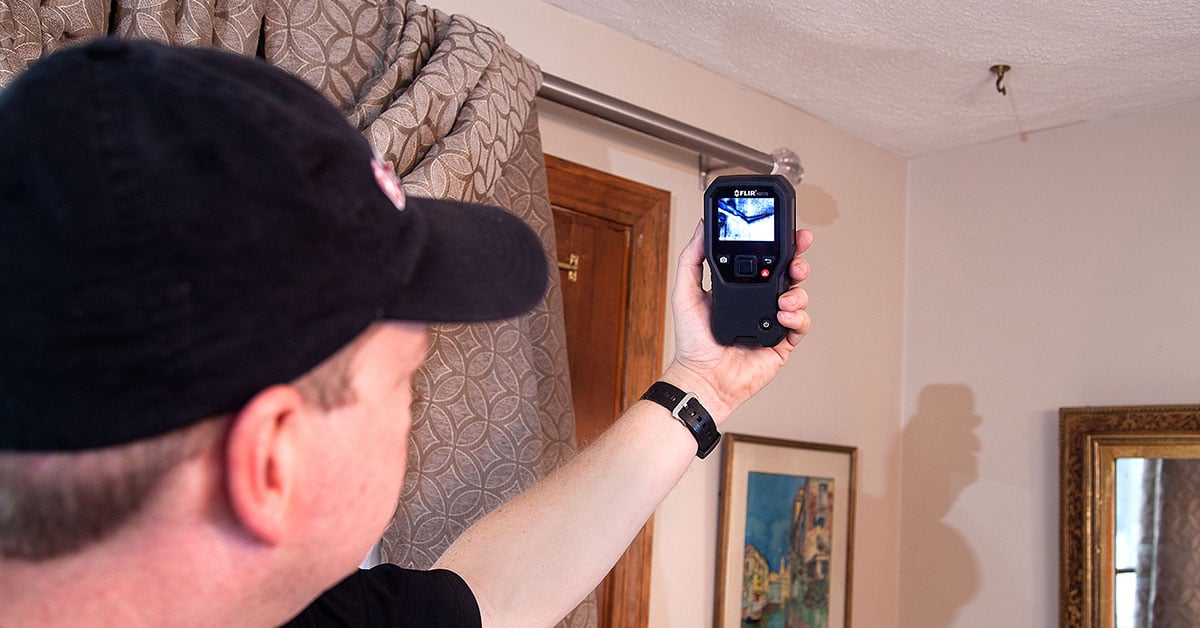Were you trying to locate insight concerning Hacks to detect leaks?

Early discovery of leaking water lines can minimize a prospective calamity. Some small water leakages may not be visible.
1. Analyze the Water Meter
Every house has a water meter. Inspecting it is a surefire manner in which assists you find leaks. For starters, shut off all the water sources. Make certain no one will purge, make use of the tap, shower, run the washing maker or dishwashing machine. From there, go to the meter as well as watch if it will certainly alter. Given that nobody is utilizing it, there must be no movements. That suggests a fast-moving leakage if it relocates. Also, if you detect no changes, wait an hour or more and also check back again. This means you may have a sluggish leak that might also be below ground.
2. Check Water Intake
Assess your water costs as well as track your water consumption. As the one paying it, you should see if there are any kind of discrepancies. If you detect sudden changes, in spite of your intake being the same, it suggests that you have leaks in your plumbing system. Bear in mind, your water costs ought to drop under the same variety every month. An unexpected spike in your costs indicates a fast-moving leak.
A steady increase every month, even with the same habits, shows you have a slow-moving leakage that's also slowly escalating. Call a plumber to thoroughly check your residential property, specifically if you really feel a warm area on your floor with piping below.
3. Do a Food Coloring Examination
When it comes to water consumption, 30% comes from bathrooms. If the shade in some way infiltrates your bowl during that time without flushing, there's a leak in between the container and bowl.
4. Asses Outside Lines
Don't forget to check your outside water lines also. Must water seep out of the link, you have a loose rubber gasket. One tiny leak can squander loads of water and spike your water costs.
5. Check and Assess the Situation
Property owners need to make it a practice to inspect under the sink counters and also even inside cabinets for any type of bad odor or mold growth. These 2 warnings show a leakage so prompt interest is called for. Doing regular inspections, even bi-annually, can save you from a major issue.
If you understand your home is already old, maintain a careful eye on your heating units, pipes, pipes etc. Look for stainings and compromising as many home appliances and pipelines have a life span. They will also normally weaken as a result of tear and put on. If you think dripping water lines in your plumbing system, don't await it to intensify. Call an expert plumber immediately so you do not end up with a dreadful mess in your home.
Early discovery of dripping water lines can mitigate a prospective catastrophe. Some little water leakages may not be visible. Examining it is a surefire way that helps you discover leaks. One small leak can lose heaps of water and also increase your water costs.
If you believe dripping water lines in your plumbing system, do not wait for it to rise.
WARNING SIGNS OF WATER LEAKAGE BEHIND THE WALL
PERSISTENT MUSTY ODORS
As water slowly drips from a leaky pipe inside the wall, flooring and sheetrock stay damp and develop an odor similar to wet cardboard. It generates a musty smell that can help you find hidden leaks.
MOLD IN UNUSUAL AREAS
Mold usually grows in wet areas like kitchens, baths and laundry rooms. If you spot the stuff on walls or baseboards in other rooms of the house, it’s a good indicator of undetected water leaks.
STAINS THAT GROW
When mold thrives around a leaky pipe, it sometimes takes hold on the inside surface of the affected wall. A growing stain on otherwise clean sheetrock is often your sign of a hidden plumbing problem.
PEELING OR BUBBLING WALLPAPER / PAINT
This clue is easy to miss in rooms that don’t get much use. When you see wallpaper separating along seams or paint bubbling or flaking off the wall, blame sheetrock that stays wet because of an undetected leak.
BUCKLED CEILINGS AND STAINED FLOORS
If ceilings or floors in bathrooms, kitchens or laundry areas develop structural problems, don’t rule out constant damp inside the walls. Wet sheetrock can affect adjacent framing, flooring and ceilings.
https://www.servicemasterbyzaba.com/blog/how-to-detect-water-leakage-in-walls/

I'm very fascinated with Finding hidden leaks and I hope you appreciated the entire post. Do you know about another person who is looking into the niche? Do not hesitate to share it. Thank you for taking the time to read it.